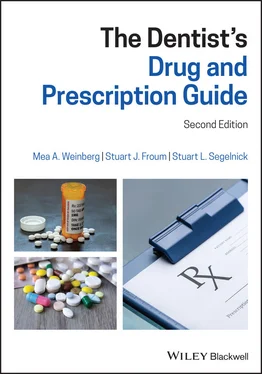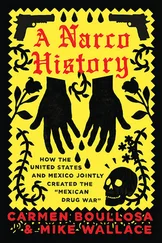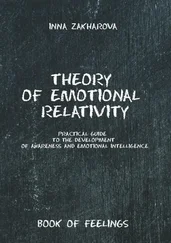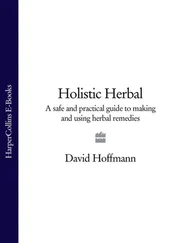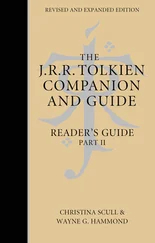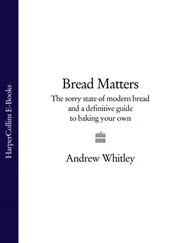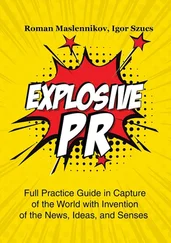Library of Congress Cataloging‐in‐Publication Data
Names: Weinberg, Mea A., author. | Froum, Stuart J., author. | Segelnick, Stuart L., author.
Title: The dentist’s drug and prescription guide / Mea A. Weinberg, Stuart J. Froum, Stuart L. Segelnick.
Description: Second edition. | Hoboken, NJ : Wiley‐Blackwell, 2020. | Includes bibliographical references and index.
Identifiers: LCCN 2019048454 (print) | LCCN 2019048455 (ebook) | ISBN 9781119539346 (paperback) | ISBN 9781119539353 (adobe pdf) | ISBN 9781119539360 (epub)
Subjects: LCSH: Dental pharmacology–Handbooks, manuals, etc. | Drugs–Prescribing–Handbooks, manuals, etc. | Drugs–Dosage–Handbooks, manuals, etc.
Classification: LCC RK701 .W44 2020 (print) | LCC RK701 (ebook) | DDC 617.6/061–dc23
LC record available at https://lccn.loc.gov/2019048454LC ebook record available at https://lccn.loc.gov/2019048455
Cover Design: Wiley
Cover Images: Empty medical prescription © Makistock/Shutterstock,Packaging of tablets © VonaUA/Shutterstock,Prescription drug bottle © Tomas Nevesely/Shutterstock
The author would like to thank the following people for their contributions to chapters and assistance while writing this book.
Cheryl Barber, MPH, MSODSenior Research Scientist HIV/AIDS Research Program New York University New York, NY, USA
Edgard El Chaar, DDS, PCClinical Associate Professor Department of Periodontology and Implant Dentistry Director, Advanced Education Program Former Director and Founder of Advanced Education Program in Periodontics Lutheran Medical Center New York University College of Dentistry New York, NY, USA; Private Practice, New York, NY, USA
James B. Fine, DMDSenior Academic Dean, Postgraduate, Graduate & CE Programs Professor of Dental Medicine (Periodontics) College of Dental Medicine Columbia University Irving Medical Center New York, NY, USA
Johnathan M. Gordon, PharmD, DDSPrivate practiceNaples, FL, USA
Aaron Greenstein, MDResident Doctor Harvard Medical School Brookline, MA, USA
Johnathan Love, MDResident Doctor Harvard Medical School Brookline, MA, USA
Dena M. Sapanaro, MS, DDSClinical Assistant Professor Department of Pediatric Dentistry Dental Anesthesiology New York University College of Dentistry New York, NY, USA
Marc A. Singer, MDInternal medicine, Cardiology; Private practice; On staff, Long Island Jewish Medical Center New Hyde Park; North Shore University Hospital Manhasset, NY, USA
The Dentist's Drug and Prescription Guide , 2nd edition, is a much‐needed update to the first edition. Change has occurred in both the dental and pharmacology field and we have striven to imbue this edition with the same scientific basis for the sensible and appropriate use of drugs in the dental patient.
Keeping this book in easy reach will enable you to answer the most common and uncommon questions the dental professional has. Whether you are a dentist, dental specialist, dental hygienist, dental assistant, or dental lab technician, this drug guide will make a valuable addition to your knowledge base.
Today, the dental provider interacts with an increasing population of medically treated and possibly medically compromised patients. According to the US Department of Health and Human Services Centers for Disease Control and Prevention National Center for Health Statistics, “During 2015–2016, almost one‐half of the U.S. population used one or more prescription drugs in the past 30 days (45.8%).” Dentists will surely be faced with daily decisions on treating people on medications. The importance of understanding potential drug interaction with our health care is essential for dental practice.
The proliferation of computer software programs providing drug interaction advice is helpful but we do not recommend thoughtlessly basing your treatment decisions on these algorithms. In this new edition, we have built for you a solid foundation allowing you to interact with the most up‐to‐date techniques and technologies in the dental and pharmacological world.
We have thoroughly updated most sections, including the most recent peer‐reviewed publications. We have added completely new sections on the new classification of periodontal disease including antimicrobial treatment, the opioid crisis in dentistry, and HIV/AIDS research and medications.
Features of the book still include the following.
Readability: short, easy question and answer format linking pharmacy theory to clinical dental practice.
Need‐to‐know information: the content of this book was written in regard to the many questions practitioners have about prescribing drugs to patients.
Drug tables: there are many tables in the book which not only summarize the main pharmacological features of the different disciplines but also allow the reader to review the key drugs and theories at a quick glance.
We sincerely hope you enjoy The Dentist's Drug and Prescription Guide, 2nd edition, and that it becomes a highly useful addition in your professional practice.
1 Introduction to Pharmacology
1.1 Definition of Terms
Absorptionthe movement of a drug from its site of administration into the systemic circulation. Adverse drug event ( ADE )injury resulting from the use of a drug. It is an unfavorable and unintentional response resulting from an administered medication. Includes medication errors such as miscalculation of dosage or misreading a prescription by the pharmacist, doctor, and/or patient. Adverse drug reaction ( ADR ) (also known as side effect)harm to the body due to a medication that was properly prescribed (e.g., drug taken at normal doses and via the correct route of administration), or an allergic reaction to a drug. There is a causal relationship between the drug and an ADR. Affinitythe ability of a drug to bind to the receptor to cause a therapeutic response. Antibiotic prophylaxisantibiotic given to prevent an infection. Bioavailabilitythe amount of a drug (expressed as a percentage) that reaches the systemic circulation. For example, any drug administered intravenously has 100% bioavailability Biologicsagents that are naturally produced in an animal or human body. Clearancequantitative measure of the rate of drug elimination from the body divided by the concentration. Creatininea waste product in skeletal muscle produced by the breakdown of creatinine phosphate. Creatinine clearance (CrCl)a test that compares the level of creatinine in the urine with that of creatinine in the blood and determines normal functioning of the kidneys. Cytochrome P450 (CYP) enzymesfound primarily in the liver and are responsible for the metabolism of many drugs. Many drug interactions occur because some drugs are inhibitors or inducers of the substrate (drug being metabolized) resulting in high or low blood levels of one or the other drug. Distributionmovement of a drug through the body to the various target tissues/organs (site of action) after entering the bloodstream. Dosagethe amount of drug required to produce the desired effect. Dosethe amount of drug taken at any one time. Drugany substance which changes a physiological function or modifies a disease process. Drug actionthe response of living matter to administered chemicals. Levels of drug action include cellular or molecular. Cellular site of drug action is defined as all foreign parts that enter the body will react with at least one portion of the cell. The initial reaction occurs here. At the molecular level, the molecules of the drug will react with the molecules of the body. Efficacythe ability of a drug to stimulate the receptor and produce the maximum response achievable by the drug. Two drugs can have the same efficacy but different potencies where one drug is more potent (lower dose required to produce desired effect) than the first drug but both will have the same effect. Elimination half‐life (t½ )the time required to reduce the amount of drug in the body or concentration of drug in blood by 50%. However, once the first 50% is gone, it will take the body more time to clear 50% of the remaining medication. Usually, it takes about five half‐lives to clear 99% of the medication. To determine the time it takes for a drug to be 99% eliminated from the body, multiply the half‐life of the drug by five. First‐pass effect (or first‐pass metabolism)before an orally administered drug enters the systemic circulation, it goes to the liver to be metabolized or biotransformed. Some oral drugs can undergo extensive first‐pass effect so that they are ineffective by the time of entering the bloodstream while other drugs undergo little first‐pass effect and maintain their original efficacy. Drugs that undergo extensive first‐pass effect cannot be given orally because they become pharmacologically ineffective by the time they enter the general circulation. Lidocaine is an example of a drug that cannot be given orally because it undergoes extensive first‐pass effect. First‐order kineticsthe rate of drug elimination decreases with time. That is, the rate of drug elimination falls as the concentration falls. Most drugs are removed from the body by first‐order kinetics. Loading dose ( LD )an initial higher dose of a drug that may be given at the beginning of a course of treatment (to more quickly reach adequate plasma levels) before dropping down to a lower maintenance dose (MD) afterwards. A LD is given on the first day of drug treatment. Maintenance dose (MD)a lower drug dose that keeps the plasma drug concentration continuously within the therapeutic range. The MD is given starting after the LD on day 1 of drug therapy and is usually half the dose of the LD. Metabolism (biotransformation)the primary mechanism of drug elimination from the body. Biotransformation will usually end the pharmacological action of the drug. Pharmacodynamicsdescribes how the drug works, its mechanism of action. How a drug interacts with receptors and what happens once the drug binds to the receptor. Pharmacogeneticsthe convergence of pharmacology and genetics that deals with genetic factors that influence an organism's response to a drug. Pharmacognosystudy of drugs derived from herbal and other natural sources. Pharmacokineticsstudy of the action of a drug once it is in the patient. It describes the absorption, distribution, metabolism, and elimination of the drug from the body Pharmacologythe science dealing with drugs and their interaction with the body's components. Pharmacotherapeuticsthe medical use of drugs in the prevention, diagnosis, and treatment of diseases. Polypharmacywhen many different medications including over‐the‐counter (OTC) and prescription drugs are taken by the patient. Potencystrength of the drug relative to therapeutic effect. Prodruga drug that becomes active only after it is ingested and metabolized in the liver. Codeine is converted from an inactive form to the pharmacologically active form morphine by first‐pass metabolism. Protein bindingattachment of a drug to proteins in the plasma. Drugs that are protein bound are inactive and become active in the free unbound form. Steady statethe point at which the rate of drug input into the body is equal to the rate of elimination. As such, the amount or concentration in the body reaches a plateau. Therapeutic index ( TI )a measure of the relative safety of a drug. For example, lithium has a narrow TI so if the plasma levels are slightly above the therapeutic range, toxicity can occur quickly. Patients must be on chronic lithium maintenance treatment to avoid toxicity. On the other hand, penicillin has a wide TI so that slightly more than the usual dose will not cause toxicity. Therapeutic rangethe dosage range of a drug that achieves the desired pharmacological response. Therapeuticsbranch of medicine that deals with the treatment of disease. Toxicologystudy of poisons and poisonings. Zero‐order kineticsthe drug is removed at a constant rate regardless of the drug concentration; it is linear with time. The elimination from the body of a large concentration of alcohol is an example of a drug that follows zero‐order kinetics. (Gossel 1998a,b; Weinberg 2013).
Читать дальше
